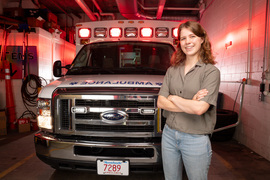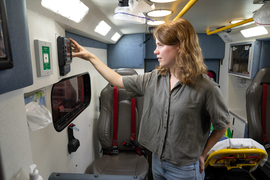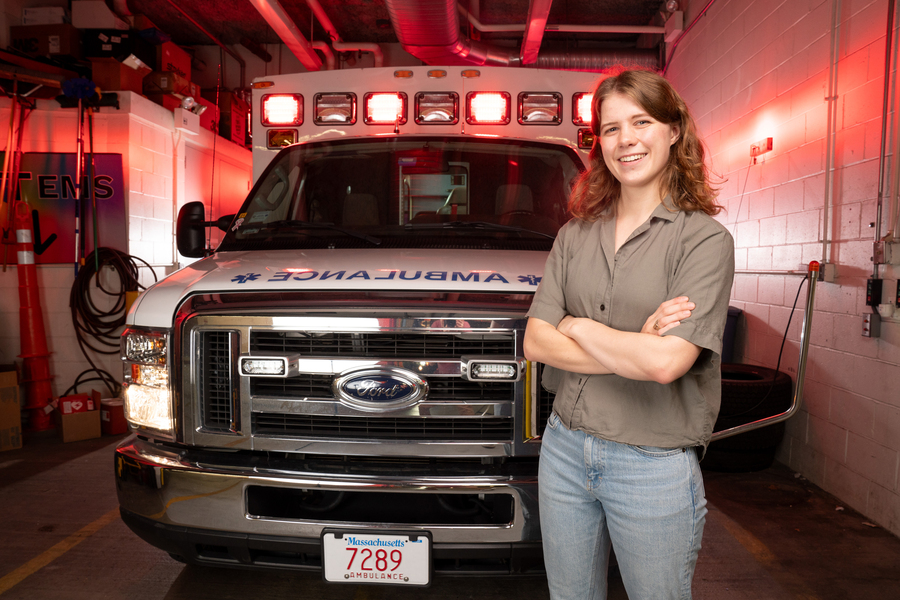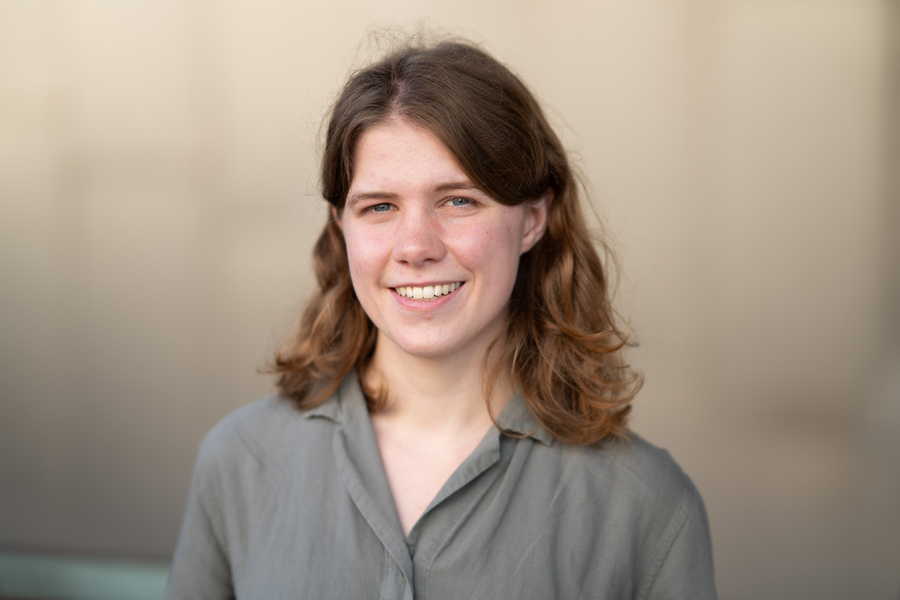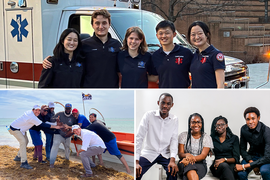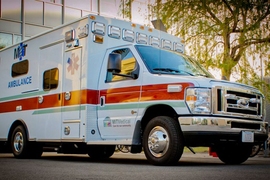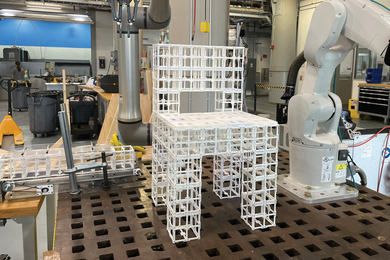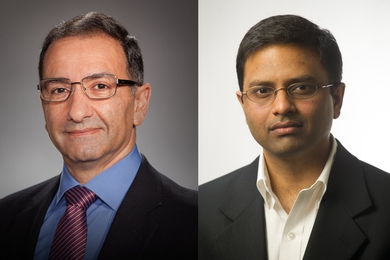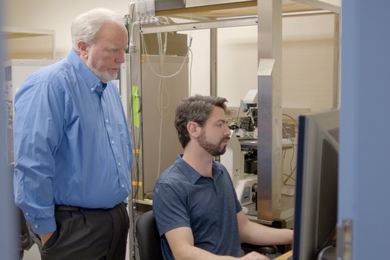Throughout her time at MIT, senior Abigail Schipper has volunteered as an EMT with MIT EMS, a student-run ambulance supporting the MIT community as well as Cambridge, Massachusetts, and Boston.
As a first responder, she witnessed a troubling paradox: During the daytime, she would learn about state-of-the-art medical technology in her biomedical engineering classes; however, by night, she witnessed firsthand people with “very preventable conditions sleeping on the doorsteps of the world’s greatest hospitals.”
This has motivated Schipper to devote her career to increasing peoples’ access to medical advancements.
As a mechanical engineering major with a concentration in biomedicine and a minor in biology, Schipper has approached the issue of health equity from a variety of directions, including research, innovation, and community service. As a student researcher, for example, she has worked on a self-dissolving birth control implant, and inspired by her work as a CPR instructor, she helped to create affordable CPR manikins with breasts, for training courses.
As Schipper approaches the end of her time as an undergraduate, she looks forward to expanding her perspective on medicine by pursuing her master’s degree in public health before proceeding to medical school.
“At MIT, I’ve had the chance to look at health care both from the provider perspective as an EMT, and as an engineer through my research. Yet, as I’ve worked on these design challenges, I’m relentlessly confronted by policy problems — the medical debt that keeps one of my patients on the street, or the ever-changing laws around reproductive health. A device can’t work if the system around it is inhospitable,” Schipper says. “Before medical school, I want to spend a year studying the broader health care system and learning the best practices for analyzing and studying these issues of health equity, in order to more effectively solve them.”
“MIT just lets you do things”
Schipper joined MIT EMS as a first-year student in 2020, during the Covid-19 pandemic. Eager to provide help, she began the long training process to become certified as an EMT and join fellow student and staff volunteers on emergency calls. She jokes that she also had another motive: “I thought I would be a cooler person if I knew how to drive an ambulance in Boston.”
In her sophomore year, Schipper organized every CPR class hosted by MIT EMS, certifying thousands of people. She says it was a “strange” activity for a 19-year-old, but concedes, “MIT just lets you do things, it’s funny.”
By junior year, Schipper was elected director of operations. During this time, she worked to acquire a second ambulance vehicle for MIT EMS to broaden their immediate coverage of 911 calls on campus. “Mutual aid is such a big part of what MIT EMS does,” she says, explaining that increasing emergency response times was integral to maintaining the health and well-being of the community MIT EMS serves.
Although “retired” from her executive position, Schipper now works as a crew chief for MIT EMS and leads the Stop the Bleed program, an emergency-care training course for the public that focuses on treating serious wounds.
She credits her EMT experience with linking her to the people of greater Boston. “A third of our calls are on campus but two-thirds are just 911 calls in Cambridge and Boston, so you really get out into the community. I feel a lot more connected to Boston than I think a lot of my peers do,” she says.
Innovating for equity
During her time as a CPR instructor, Schipper noticed the absence of manikins with breasts in training courses and was often questioned by students if women could even receive the chest compressions required for CPR. “I saw something I was provided and thought, ‘I’m a mechanical engineer. I think I can do better,’” she says.
With a team of bioengineers, mechanical engineers, and social scientists from MIT EMS and Harvard’s Crimson EMS, Schipper co-founded the LifeSaveHer project to produce affordable, anatomically realistic manikins with breasts for gender-equitable CPR training. According to the project’s website, women are 29 percent less likely than men to survive an out-of-hospital cardiac arrest, and they are 27 percent less likely to receive bystander CPR. The group is currently supported by the MIT PKG IDEAS Social Innovation Challenge, which awarded LifeSaveHer the top prize in its 2023 competition.
Gender equity in health was also the focus of Schipper’s undergraduate research project in the lab of Associate Professor Gio Traverso, in which she helped create a birth control implant that dissolves in the body. “Current birth control implants last for about three years and usually require surgical intervention to be taken out,” she explains. “If you don’t have access to surgical facilities, that’s not realistic for you, but you still deserve to have a contraceptive option that’s easy.”
Schipper has taken her research of public health abroad too. With support from the MIT-UK program at MISTI, last summer she worked with University College London Hospital’s Find and Treat service. She also studied airborne filtration and worked to reduce the risk of infectious disease by building lower-cost carbon dioxide sensors.
The importance of community
In her research and extracurriculars alike, establishing strong social connections has been an integral component in Schipper’s student experience.
Along with MIT EMS, Schipper is a member of Sigma Kappa and the Burton Third Bombers living community. She appreciates the fun opportunities her living community creates, something busy MIT students can struggle finding time for. On her dorm floor, “Whatever silly idea you have, you will have at least 10 people who are willing to do it with you,” she says.
Reflecting on the past three years, Schipper says, “Coming into MIT as a freshman, a lot of the things I was doing felt very disjointed. I’m working on this ambulance but I’m also joining this sorority and I’m also studying mechanical engineering. As I’ve progressed, everything has consolidated and then stemmed from each other. MIT has given me a lot of support and opportunities to find a central thing, and then pursue offshoots in a very meaningful way.”
